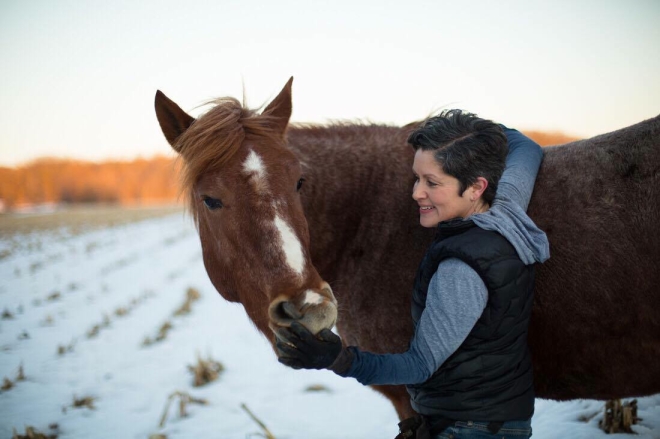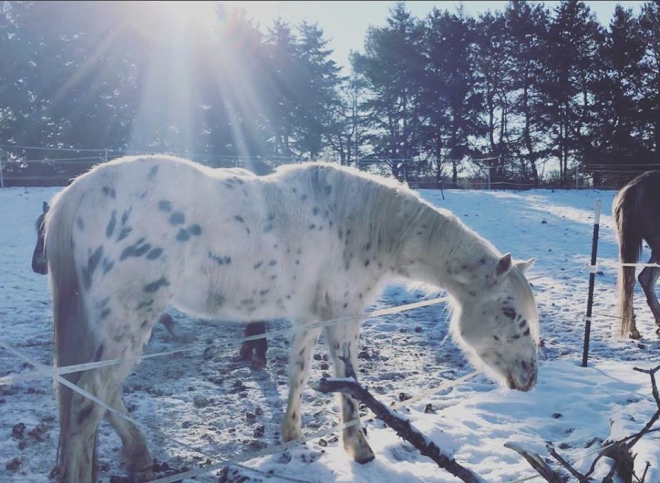
Rune is nearly four.
Next week Rune turns four years old. (Read about her birth and early +R training by clicking here)
It’s an auspicious age for a horse, no longer a juvenile, not quite a mature adult. But, four IS an age where training can continue a bit more intensively. It’s an age where it’s safe to start sitting on your horse for short spells, first steps under a rider can be taken and an education on the finer points of body awareness and balance can begin in preparation for more frequent and nuanced riding year five and six. In short, it’s an exciting time.
When Rune first was born and I shared her with the world through my blog, there was one reader in particular who was very upset that I trained her so regularly through her foal-hood. She wrote a venomous paragraph to me in the comments of my blog letting me know I might has well have named Rune “Ruined” because of the ignorance of my ways. Although I knew she was simply threatened by something in my work, the play on words was particularly cruel. I love words and sounds and the similarity echoed a bit in my mind. It had so much anger and violence behind it and the word was meant to wound me personally.
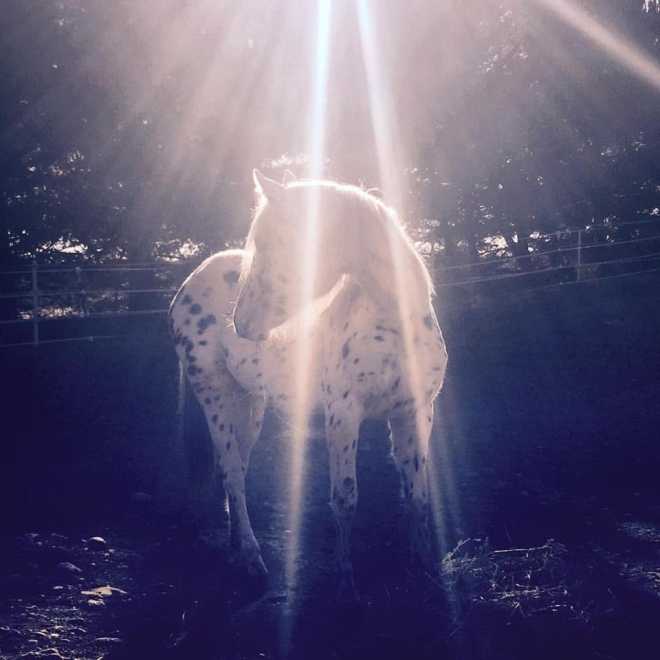
Glowing Rune
So it is with particular relish that I am happy to report that Rune is anything but ruined. Rune remains open, curious, thoughtful, playful, vehement, athletic, passionate and whole. She has playful and complex relationships with multiple other horses. She remembers every single lesson from her early learning and is a very easy horse to handle for haltering, hoof trimming and husbandry. She leads well. She can be touched all over and remains relaxed. In short, she is ready to do more!
When I think back to preparing Dragon to be ridden, I feel both sorry for and grateful to him. Sorry because I didn’t have the skill set to actually layer in the skills he needed to really be confident, physically ready and successful. Grateful because he didn’t injure me despite his frustration and lack of preparation.
But I have shed my skin many times since then and Rune will have the benefit of an entirely new teacher. So what will I bring to the table now, to prepare a young horse to be relaxed, fascinated and physically able to carry a rider and play a new game?
Confirm relaxation in training environments. No matter how Rune felt when when we left off last year, I need to approach environments with new eyes this year. Regardless of my plans and how excited I may be to (figuratively) move forward into a new training space, I need to continually check in with the horse in front of me. Rehearsing well-installed foundation skills in the indoor arena and down below in the outdoor arena will take precedence over starting new lessons until I can observe total relaxation and engagement.
Teach “mounting block games” as targets and in different arrangements so they become a conditioned reinforcer in and of themselves. Attach default behaviors to the blocks to layer in meaning and complexity.
Introduce new equipment: a cavesson and bareback pad during familiar lessons.
Deepen mat work through rehearsal and fun ground-work games for later use the first few months under a rider, especially. Mats are our visual “go forward” cues for green horses whose trainer and support has just disappeared onto their back. These can be combined with mounting block games to “interleave” skills, an important concept I’ll revisit in later blogs.
Begin work in-hand: Initially, I will teach Rune about moving her shoulders and moving hips in relationship to one another and in relationship to a line of travel so that I can help her balance and re-balance under a rider
Trainers talk a lot about “balance” and body awareness but they often leave it there as a generalization. What do they mean? Good balance is understood as desirable but left unexplained.
One of the first things I will teach Rune in-hand is to move her shoulders left and right and to move her hips left and right. In that way, I can influence how she is carrying her weight and help her to carry in healthy ways that make her stronger, rather than moving in ways that break her down because of compensation. I will post extensive video on this piece of the process. To me, it’s not “body awareness” if balance just seems to magically improve. It’s body awareness if I say “I am going to ask her to bring her shoulders in to the left one track” and she can and does. If it isn’t measurable it might not be conscious or repeatable. Both of those things matter down the road. They are building blocks. This work will be done though using my body as a target, initially. Once she understands my body as a target, these cues can be transferred to the reins.
Rein games through physical geography. The meaning of the reins is completely learned, not innate. Unless you use a rein to throw a horse so out of balance that they have no choice but to “fall” in their footfall and catch themselves, there are many actual possibilities for each rein suggestion. That means every horse needs to go through an active learning process to understand the intended meaning of the rein. Using cones, walls, buckets and barrels to suggest the intended motor pattern simplifies and breaks down the process for a horse and makes learning easy.
Throughout this process, Rune and I will document each and every step. Starting a horse under saddle, rather than “breaking” them, is a layered and multi-faceted process. And it should be fun and fascinating for the trainer AND the learner. There are three broad categories involved in starting a horse:
- “Backing” the horse. Backing means you have sat on the horse’s back. Sitting on the horse’s back is not the same as having created a riding horse. In behavioral terms, backing confirms that your horse is relaxed and operant with all the postures and equipment you need when riding or getting ready for riding. It’s a fun and usually simple step, but many people really get into trouble when moving from backing to actually riding.
- Installing basic motor patterns. Horses need to know how to go forward, stop, back up, turn left and turn right before a rider gets on. These are often gross motor skills at first that lack the precision or finesse that we want the horse to have later. Teaching these skills once ON is not recommended. Having them well-rehearsed, and on both a verbal, visual(cones, mats, buckets) and tactile cue is the best way to ensure that your horse will be able to easily find the road to reinforcement with you up on their back.
- Teaching nuances within the larger motor patterns. Teaching horses how to align their shoulders and hips in different orientations, teaching them to lengthen their neck out to the rein as a target and to do those things in different gaits and on different lines of travel allows them to gain body awareness and strength. This is the larger, eventual goal of riding, but teaching your horse these behaviors on the ground first so that they are aware of them from the first time you are on allows a deeper and more productive ridden conversation. If riding is something you think of as point A to point B, then there is a lot of dead space in that conversation! These nuances are what fills up that riding conversation to a fascinating and engaging discussion.
I hope you will join us for every step of this journey. I plan on enjoying every moment.
I plan on taking our time, listening deeply and loving it for what it is, a discovery. There is all the time in the world.
If you are starting your own horse under saddle OR re-starting a cross over horse in the positive paradigm there will be much for you to take out to your horse and practice. Even if you are just getting started after a long winter, there will be tons of material and applicable concepts. So, join us on what I’m sure will be a magnificent journey we can explore together.
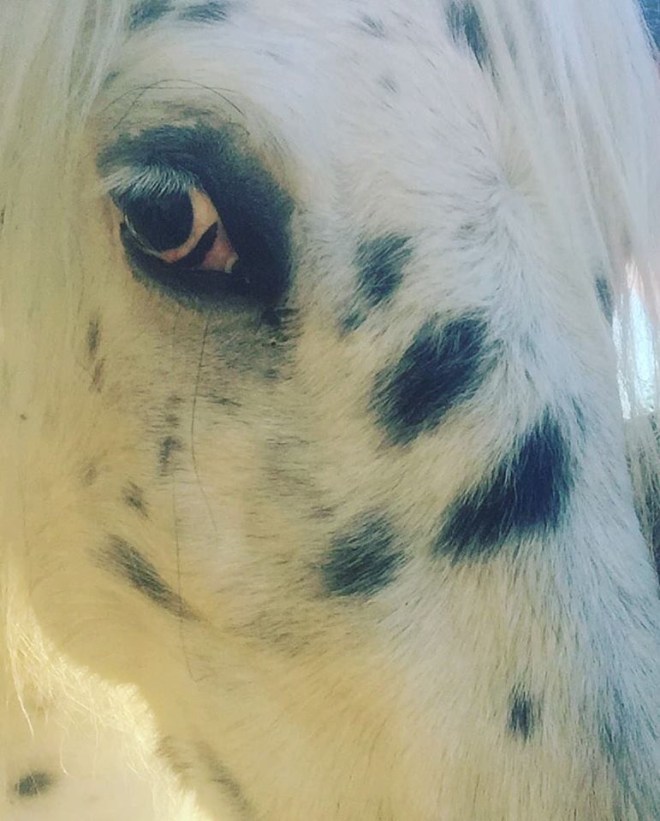
Rune Trillium
If you enjoyed this blog and would like to support my writing, head on over to my Patreon page and become a patron.

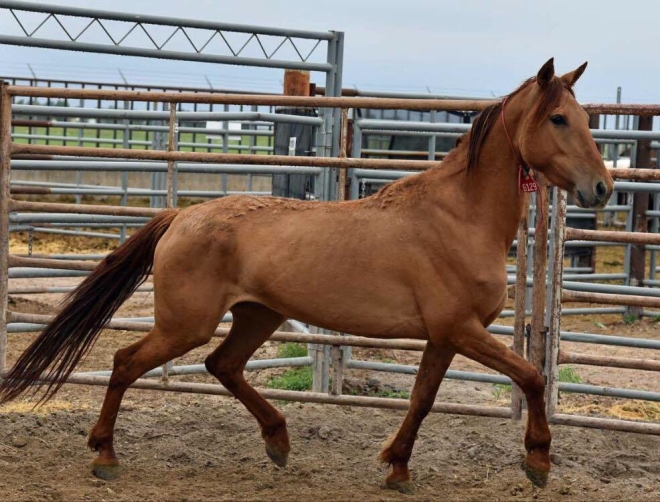
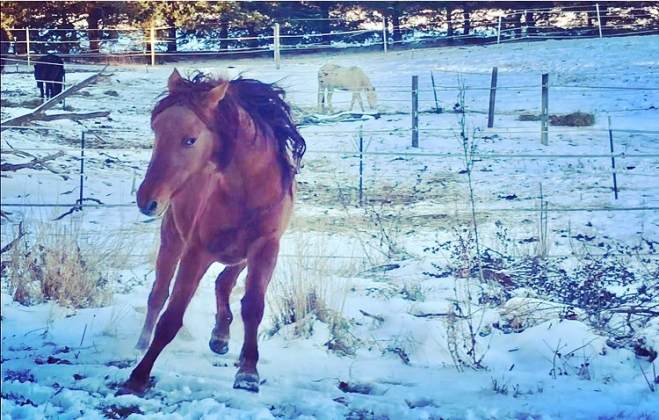


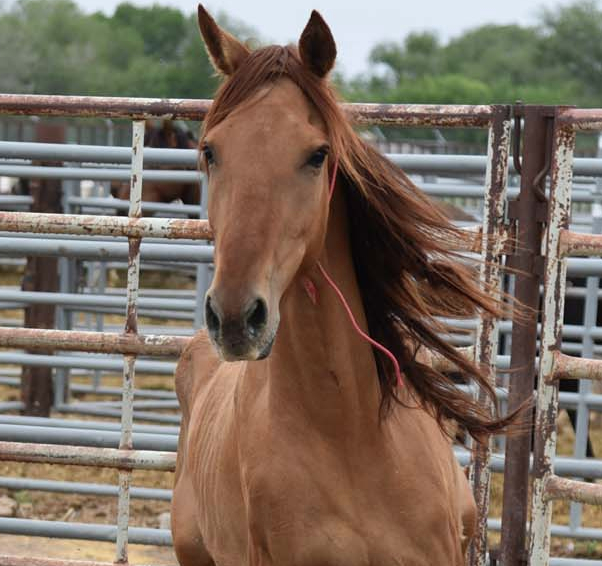

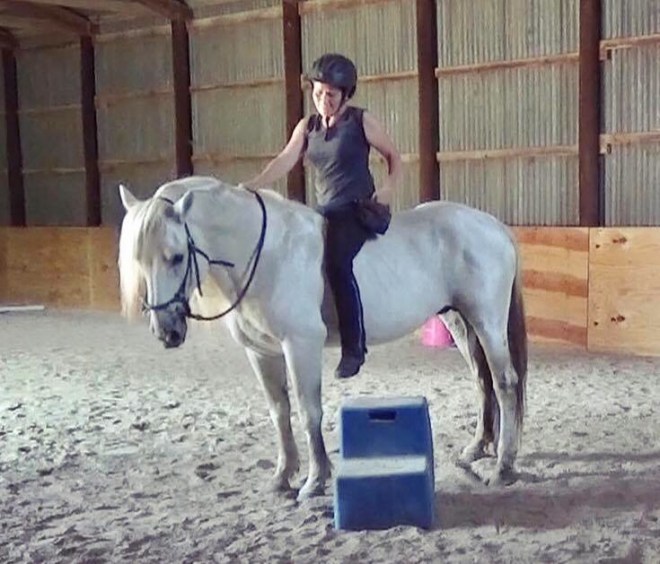
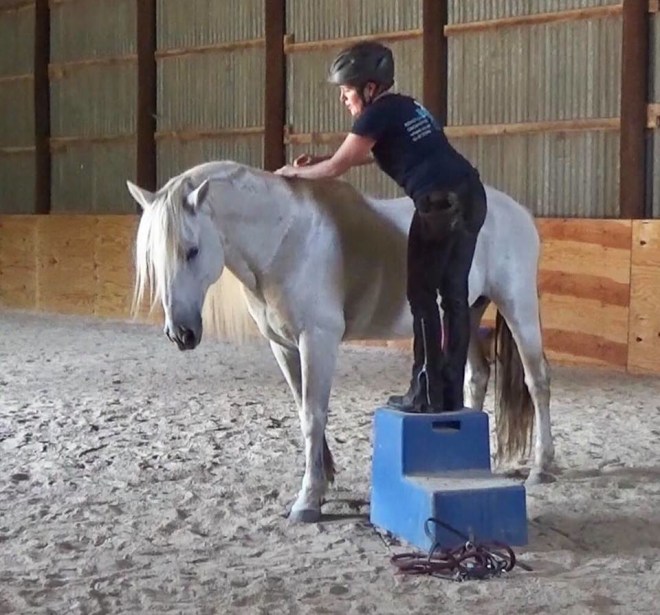

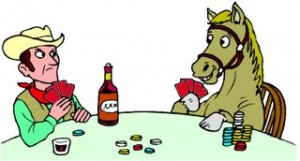 I like to think of certain expressions of body language is as “tells”, a term I borrowed from poker. In cards, hiding your emotions is a strength, so you can bluff without your opponents guessing at your hand. In reality, though, it’s really difficult to suppress expression, and it’s common for other players to learn what you look like when you know you are about to win and what you look like when you know you are going to lose. Emotions want expression and often our body language speaks regardless of our conscious intent. These consistent expressions are known as tells.
I like to think of certain expressions of body language is as “tells”, a term I borrowed from poker. In cards, hiding your emotions is a strength, so you can bluff without your opponents guessing at your hand. In reality, though, it’s really difficult to suppress expression, and it’s common for other players to learn what you look like when you know you are about to win and what you look like when you know you are going to lose. Emotions want expression and often our body language speaks regardless of our conscious intent. These consistent expressions are known as tells.